PROTECT YOUR DNA WITH QUANTUM TECHNOLOGY
Orgo-Life the new way to the future Advertising by AdpathwaySuspension seatposts are a great way to boost comfort on gravel, commuter, and touring bikes. The USE VYBE suspension seatpost stands out for its sleek, telescopic design that compresses vertically like a dropper post. It uses a combination of coil and elastomer springs to absorb both big hits and small vibrations, all while blending in visually with most bikes.
But how does it perform on the road and trail?
In this review, I take a deep dive into the VYBE’s real-world ride quality, from smooth pedalling on tarmac to harsh hits on gravel. I also compare it directly to the Redshift ShockStop PRO Endurance, one of the most refined suspension seatposts available.
Backed by vibration test data and field testing, this review will help you decide whether the VYBE’s performance and value stack up, and if it’s the right upgrade for your bike.
USE VYBE Suspension Seatpost

The USE VYBE suspension seatpost stands out from other high-performance models due to its telescopic design. This means it moves vertically within the shaft, much like a dropper post.
One of the things I like about the telescopic seatpost design is its subtle appearance. This seatpost blends in seamlessly with most bikes and doesn’t draw much attention, despite offering 50 mm of suspension travel.
The VYBE uses a combination of coil and elastomer springs. The coil spring is highly responsive to impacts from the ground, while the elastomers help to dampen smaller vibrations for a smoother ride.
There are two versions of the VYBE seatpost. The standard model reviewed here features a cylindrical single-bolt clamp with 10 mm of saddle setback. However, I found that this clamp can struggle to securely hold saddles positioned toward the rear of their rails – it tends to slip under load. The VYBE GR model addresses this issue with a much more secure dual-bolt clamp, but it’s only available with 0 mm of saddle setback.
In terms of weight, the VYBE ranges from 447 to 550 grams, depending on the post diameter. This makes it about 200 grams heavier than most rigid aluminium seatposts and around 300 grams more than carbon options. That said, it’s comparable in weight to other suspension seatposts on the market.
It’s available in three diameters (27.2, 30.9, and 31.6 mm), all with a length of 400 mm. This might be too long for some smaller frames, so make sure your frame can accommodate a long seatpost first. The seatpost comes with a standard 7×7 mm rail clamp, but USE also offers five alternative clamps to fit oversized and oval saddle rails.
 Here’s what’s lurking inside the USE VYBE suspension seatpost.
Here’s what’s lurking inside the USE VYBE suspension seatpost.The VYBE commands a premium price of around £180. However, this seatpost is made in the UK, and this local production allows USE to maintain tight quality control and precise manufacturing tolerances. The build quality is excellent.
USE also offers service kits, which include the energised seal, top-out washer, keys, and bushings, making maintenance straightforward.
Springs and Tuning Options
Spring options include soft, medium, and hard, accommodating rider weights from 38 to 100 kg (85–225 lbs). Riders near the weight thresholds can tailor their choice based on terrain, opting for a softer spring for rougher conditions, or a firmer one for smoother roads.
However, the spring rate must be selected at the time of purchase. If you need to change it later, softer or harder spring kits must be bought separately.
The seatpost also features a pre-load adjustment located at the bottom. This alters both the spring stiffness and the initial firmness of the suspension, effectively reducing sensitivity in the early part of the travel for a more controlled ride feel.
Telescopic vs Linkage Seatposts
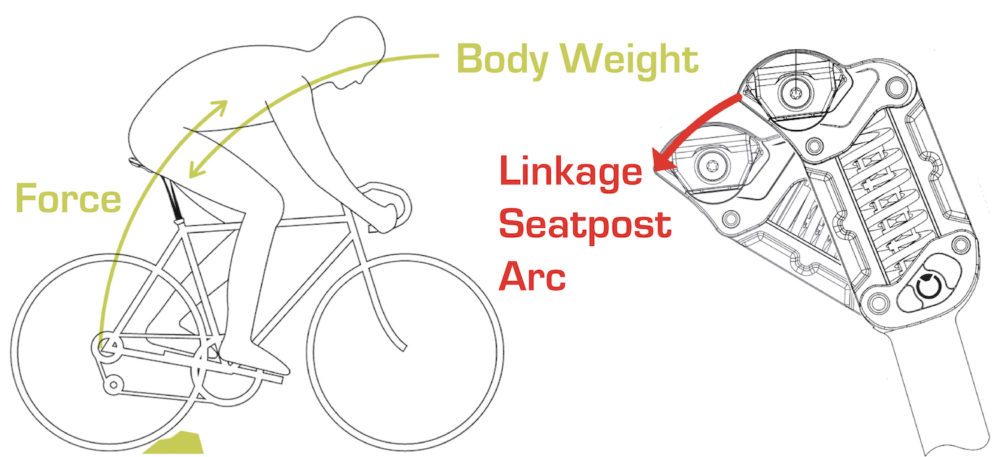 Linkage-driven suspension seatposts move rearward as they compress.
Linkage-driven suspension seatposts move rearward as they compress.At a glance, the USE VYBE shares several design elements with the Redshift ShockStop PRO Race seatpost I’ve previously reviewed. Both use a combination of coil springs and elastomers to absorb impacts, and both feature a pre-load adjustment via a bottom cap.
However, a key difference sets them apart.
The ShockStop PRO employs a linkage-driven mechanism that allows the saddle to move rearward as it compresses. This rearward motion aligns with the direction of force from the rear wheel, enabling the seatpost to counteract, and in some cases nearly neutralise, bumps and jolts. The result is a significant reduction in impact forces transmitted through your back and bum, especially on rough terrain.
In contrast, the VYBE’s telescopic design moves strictly up and down. For best results, your body weight needs to be centred directly above the post. Riders who position their saddles far back may not experience the full benefit of a telescopic post.
Riding the VYBE Suspension Seatpost

Riding the VYBE suspension seatpost on my local gravel routes, I found the overall ride quality to be quite good. It remained stable on smoother sections, with minimal bounce, even during hard accelerations, providing a firm and efficient pedalling platform.
However, on rougher gravel terrain, the seatpost exhibits a bit more bounce. Hitting larger compressions, like potholes, can trigger a noticeable ‘pogo stick’ effect, where the seatpost stores up energy and rebounds quickly. While this trait isn’t unique to the VYBE, it does seem more pronounced here than with some other suspension seatposts I’ve used.
Overall, the VYBE delivers capable performance and sleek aesthetics, but it lacks the refined, floaty feel of its more sophisticated competitors. It gets the job done, but not with the same finesse.
Let’s now find out how it did in my vibration tests.
My Test Bike and Vibration Measurement Procedure

I conducted this vibration test on my Mondraker Dusty gravel bike fitted with Spank Flare 24 Vibrocore wheels and 700C x 45 mm Challenge Getaway tires. The rear tire was inflated to 40 PSI to get a better sense of the seatpost’s capability.
A direct comparison was made between an aluminium rigid seatpost, a USE VYBE suspension seatpost, and a Redshift ShockStop PRO Endurance seatpost. The spring rate of the suspension seatposts was adjusted to my body weight and preferred riding style.
I have two test scenarios: a big hit test that simulates riding across a 30 mm tall obstacle like a tree root or edgy rock, and a high-frequency chatter test that simulates riding on a bumpy gravel road.
You can read more about my vibration measurement procedure HERE.
Vibration Test Results
Big Hit Test

| Average Acceleration (g) | Vibrations When Compared to the Rigid Seatpost | |
| Aluminium Rigid Seatpost | 1.91 | – |
| USE VYBE Seatpost | 1.70 | 10.5% Fewer Vibrations |
| Redshift PRO Endurance | 1.34 | 29.8% Fewer Vibrations |
In my big hit test, the VYBE suspension seatpost performed as expected. It was a clear improvement over a rigid post, which struggled to absorb sharp impacts effectively.
However, the Redshift ShockStop PRO Endurance stood out by a significant margin, reducing vibrations by nearly 20% more than the VYBE, even with just 35 mm of travel compared to the VYBE’s 50 mm.
The difference comes down to design. The ShockStop’s rearward linkage and superior damping allow it to absorb and dissipate energy more effectively. When it comes to handling big hits, the Redshift remains the benchmark.
High-Frequency Chatter Test

| Average Acceleration (g) | Vibrations When Compared to the Rigid Seatpost | |
| Aluminium Rigid Seatpost | 2.39 | – |
| USE VYBE Seatpost | 2.87 | 20% More Vibrations |
| Redshift PRO Endurance | 1.93 | 19.2% Fewer Vibrations |
In my high-frequency chatter test, the VYBE didn’t just fall short of the Redshift; it actually performed 20% worse than the rigid seatpost!
That might sound surprising, but the culprit is the same ‘pogo stick’ effect noted earlier. The VYBE’s overall design leads to rapid rebound responses, which in turn increase the average accelerations recorded by my test equipment.
That said, this didn’t translate to a less comfortable ride. Far from it. I never felt less comfortable on the VYBE compared to a rigid post. But the quick rebound behaviour was noticeable, both to me and to my accelerometer.
How Does It Compare?
The USE VYBE suspension seatpost is a reasonably priced option for riders looking to significantly improve comfort over a rigid post. It performs admirably on bigger impacts and remains stable under hard pedalling. However, it lacks the overall refinement of higher-end models, largely due to its noticeable ‘pogo stick’ rebound effect.
In contrast, the Redshift ShockStop PRO Endurance, though around €100 more expensive, delivers superior comfort over bumpy gravel roads and sharp impacts. Its rearward linkage design and elastomer-coil spring combination help it manage vibrations more effectively.
The added 12 to 15 mm of effective setback also aligns better with most riders’ saddle positions. And a major bonus: all tuning components come included with the seatpost, allowing for easy customisation out of the box.
Buy the PRO Endurance for $279 on Amazon – 27.2 mm (shims available)
Summary

PROS
1. Takes the sting out of bumps
2. Subtle appearance
3. Well-made
CONS
1. Not as effective as other seatposts
2. Not as many setback options
3. Long length won’t fit all bikes
The USE VYBE suspension seatpost is a solid choice for riders looking to boost comfort over rough terrain without compromising their bike’s clean aesthetics. Its telescopic design integrates discreetly and performs well on larger impacts, offering a clear upgrade over rigid posts.
That said, it’s strictly vertical travel and noticeable ‘pogo stick’ rebound limits its finesse, especially on high-frequency chatter. This was particularly surprising given how much more refined I found the VYBE suspension stem compared to Redshift’s equivalent.
While the VYBE gets the job done, it doesn’t quite match the polish of high-end options like the Redshift ShockStop PRO Endurance (US $279 on Amazon). The ShockStop’s rearward travel, better damping, and inclusive tuning kit justify the extra cost for those chasing maximum comfort and control.
If you want a well-built, no-fuss upgrade, the VYBE suspension seatpost is worth considering. But if ride quality is your top priority, investing in a more refined design will pay off.
For more on the USE VYBE, visit USE-Components.com.


 1 month ago
5
1 month ago
5

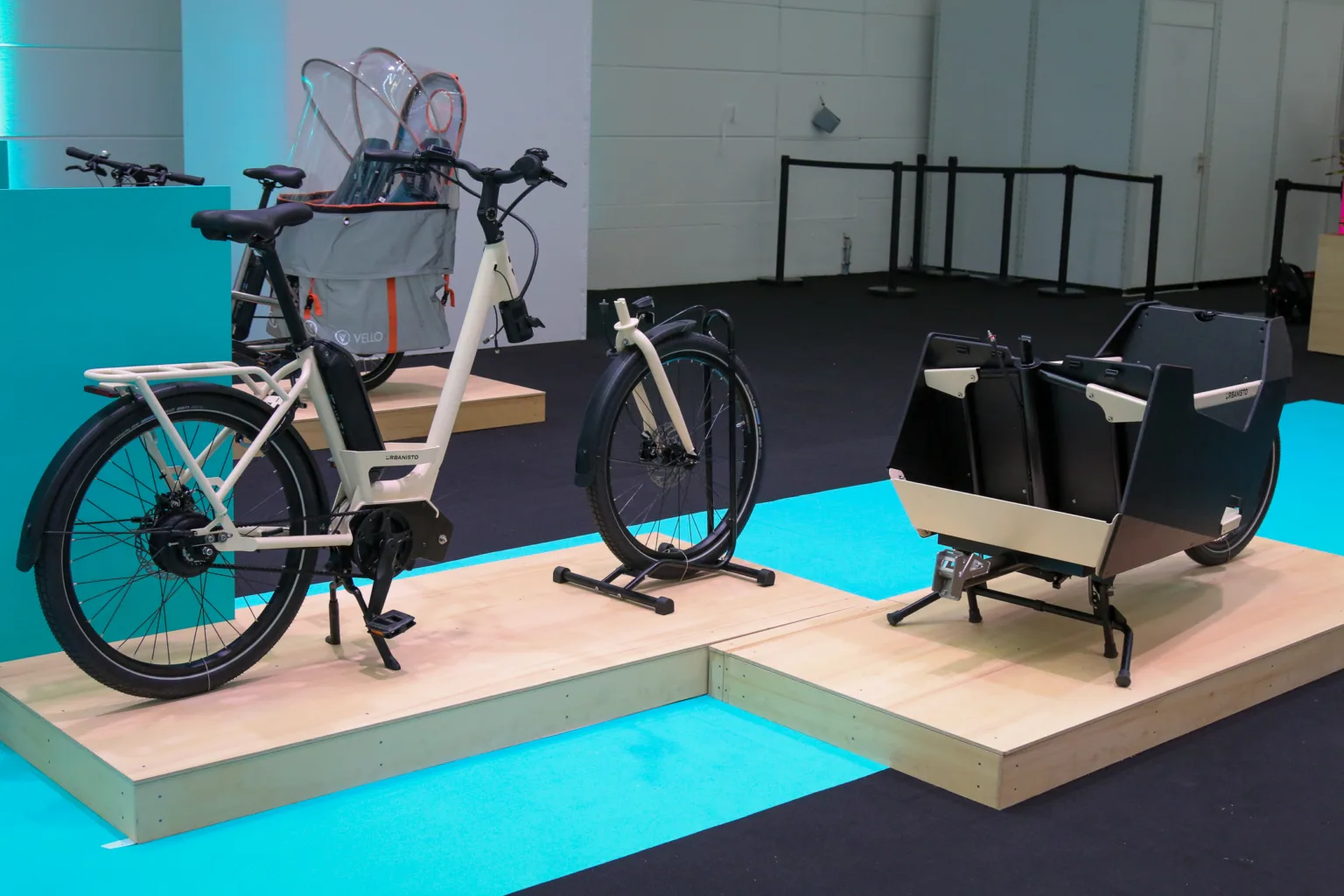

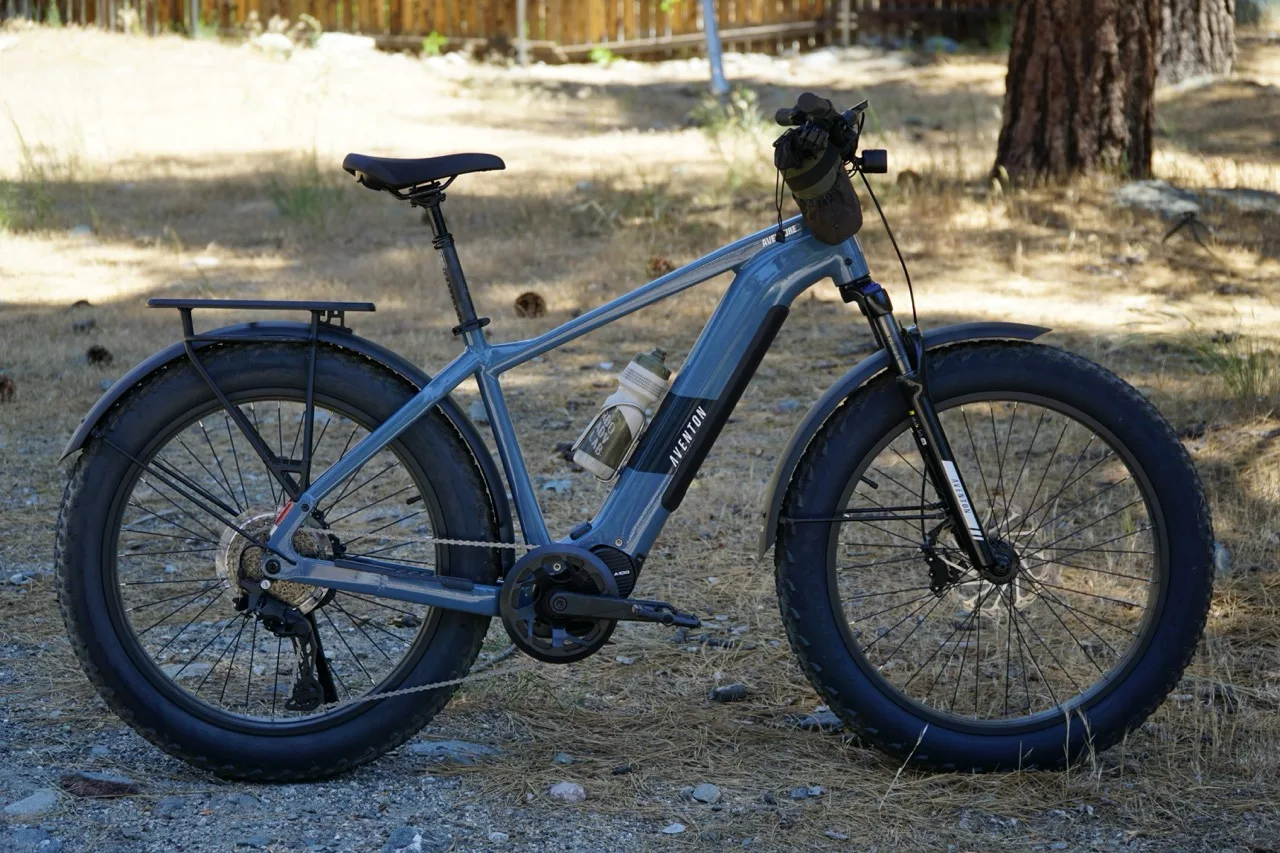
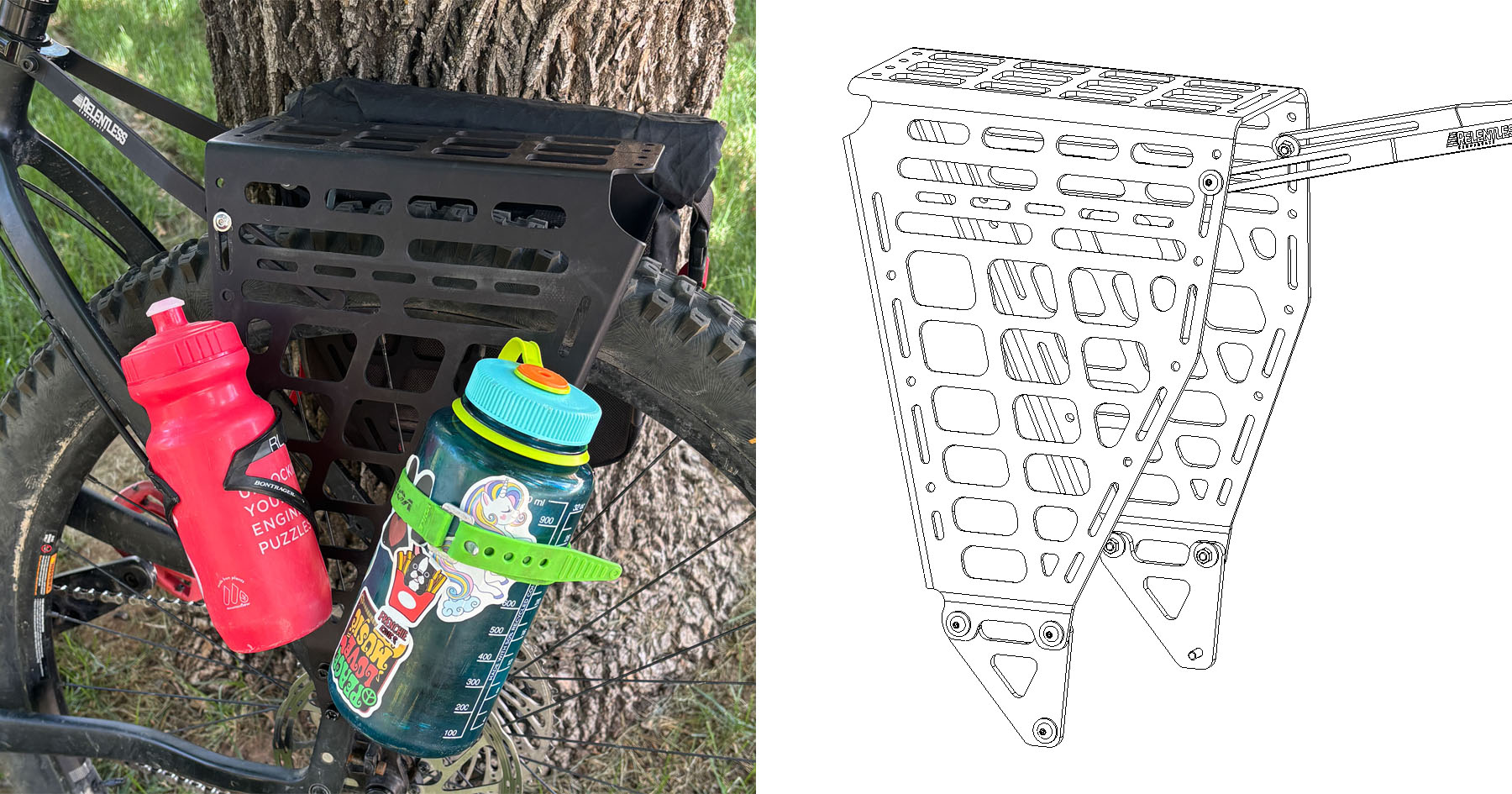
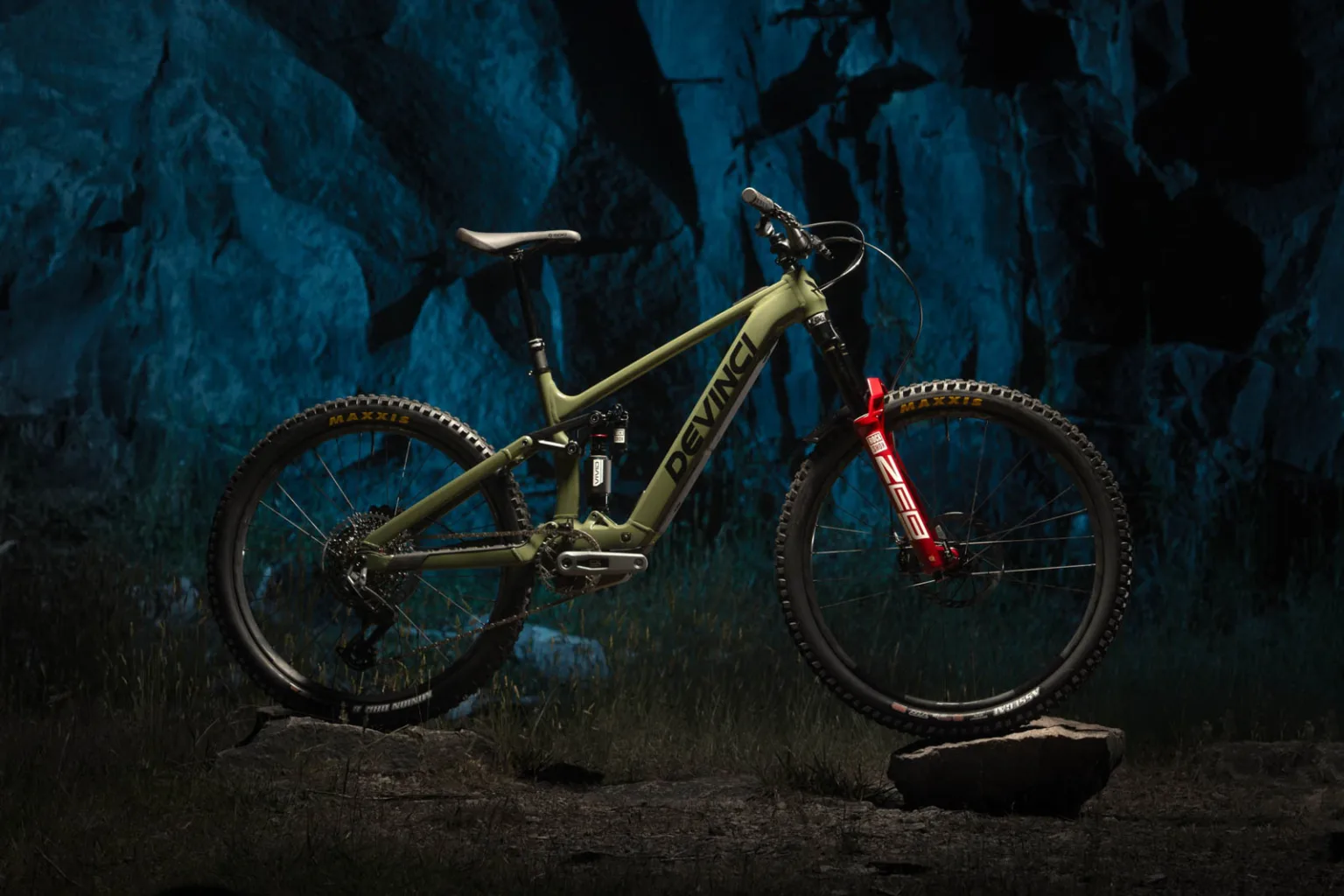




 English (US) ·
English (US) ·  French (CA) ·
French (CA) ·  French (FR) ·
French (FR) ·